
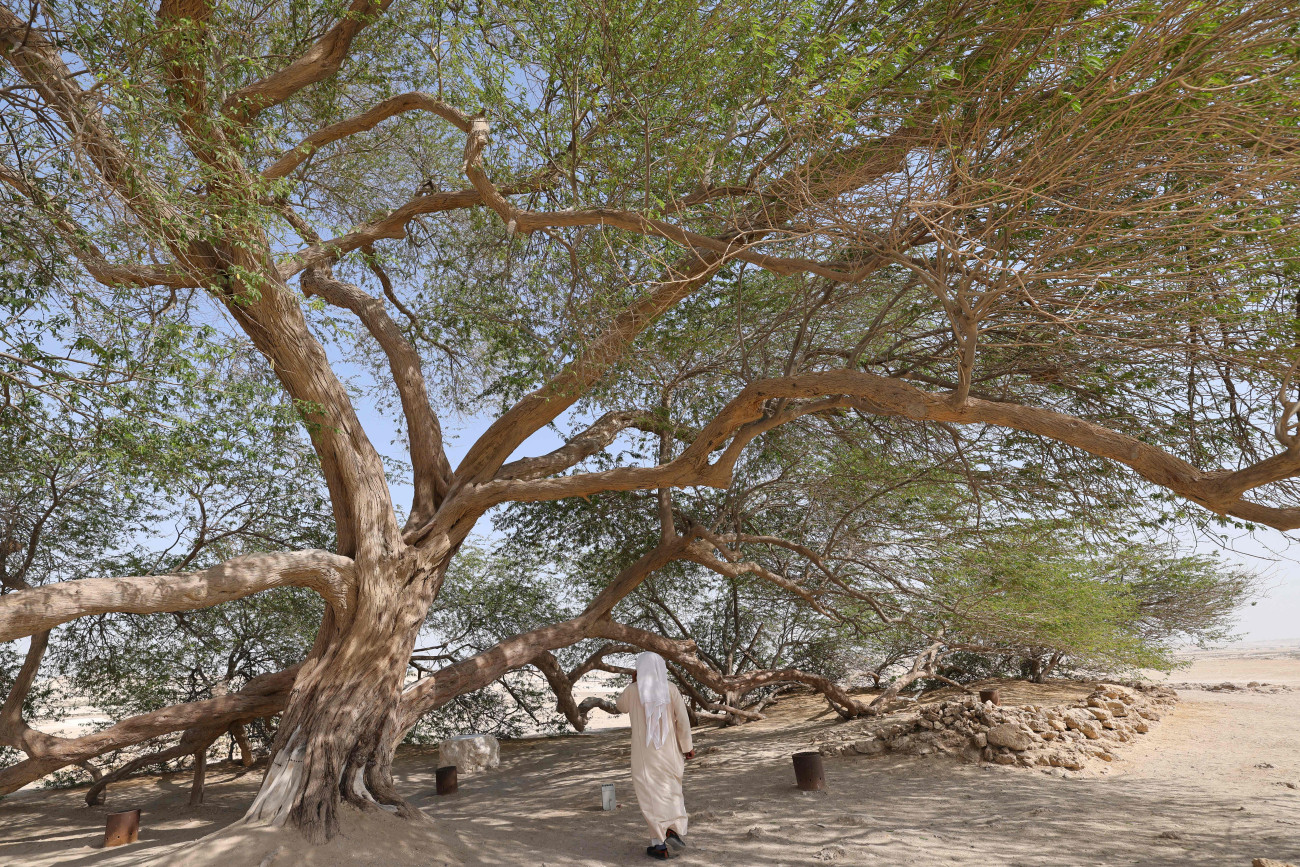
Summary
From extreme heat and drought to dust storms and rising sea levels, the Kingdom of Bahrain is facing the growing impact of climate change, with projections indicating conditions will only get worse in the future. Manama's vulnerability to the effects of climate change directly intersects with its broader societal and governance issues, necessitating comprehensive climate-resilience strategies to address these interconnected challenges.
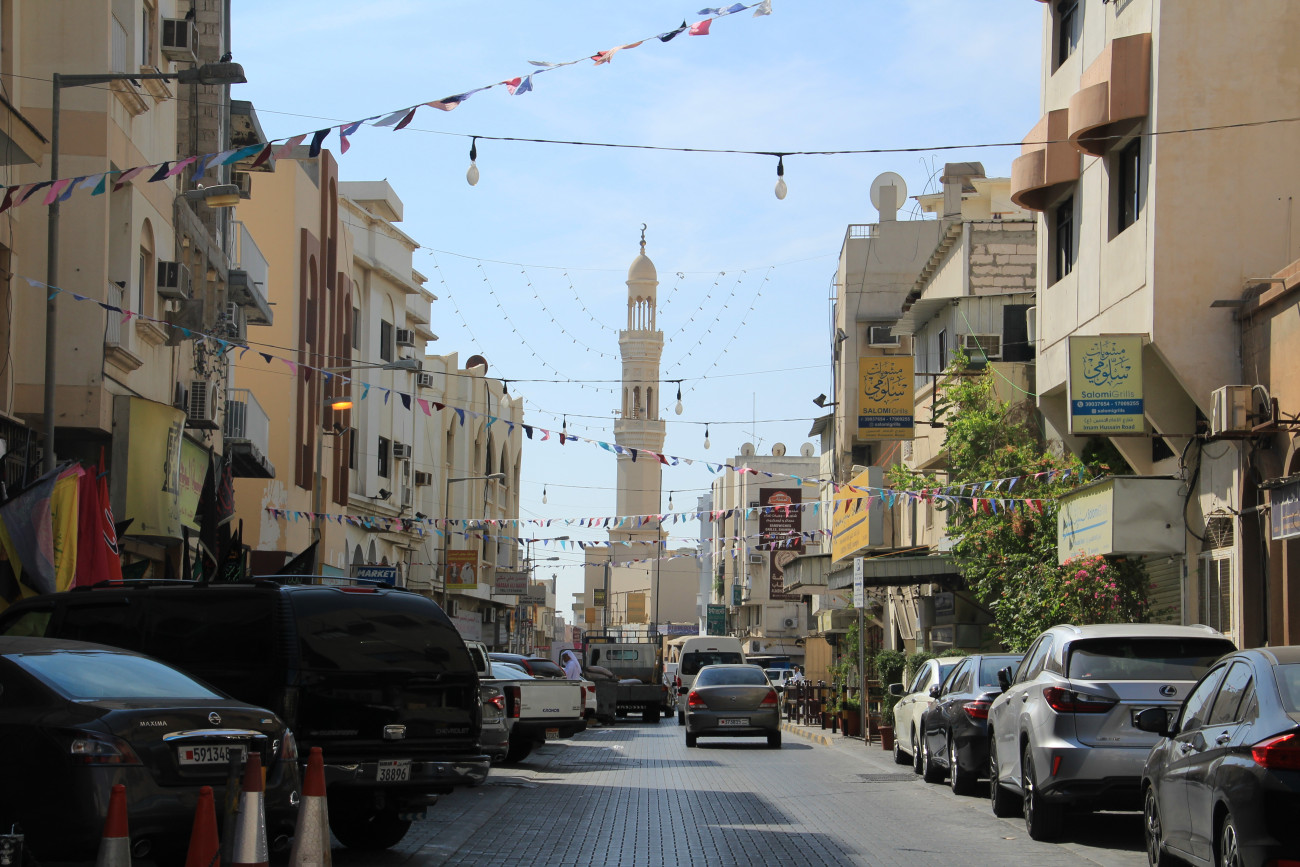
Contents
Bahrain’s Climate and the Water-Food-Energy Nexus
Current and Projected Impacts of Climate Change
Socioeconomic Implications of Climate Change on Governance and Society
Assessing the Climate Risk of Bahrain’s Most Climate-Vulnerable Communities
Current and Ongoing Multi-Sectoral Climate-Resilience Initiatives
Accessible Climate-Resilience Opportunities at the Governance and Citizen Level
Climate Change Response as a Pathway to Reconciling Bahrain’s Societal Burdens
Policy Recommendations for Community and Governance-Based Climate Resilience in Bahrain
Executive Summary
The Kingdom of Bahrain faces challenges on multiple fronts as it deals with various governance and socioeconomic issues as well as the growing impact of climate change. Largely reliant on energy derived from oil and natural gas, the country contributes to global carbon emissions, exacerbating the climate crisis and placing the nation under environmental pressure. Bahrain is also experiencing heightened climate change impacts, including extreme heat, drought, and dust storms, with projections indicating conditions will only get worse in the future. Rising sea levels threaten its coastal areas, while warmer oceans endanger fisheries and amplify extreme weather events. Certain population segments are especially vulnerable to climate change impacts, including migrant workers exposed to extreme heat, the elderly facing health risks during extreme weather events, and financially challenged communities struggling with rising living costs. Farmers face secondary climate risks as well due to increased water scarcity, potentially impacting local food production and the nation’s food security.
To address these issues, Bahrain has initiated a number of policies to enhance national climate resilience, including utility-based programs to promote residential energy and water conservation as well as government measures like the National Initiative for Agricultural Development to boost local food production. Engaging citizens in climate-resilient actions alongside government efforts offers opportunities to address socioeconomic challenges and build a more resilient future for Bahrain as the impacts of climate change accelerate. The kingdom’s vulnerability to climate change directly intersects with its broader societal and governance issues, necessitating comprehensive climate-resilience strategies to address these interconnected challenges. This entails understanding climate impacts, evaluating existing resilience efforts, and implementing new initiatives to alleviate governance and societal issues while enhancing the nation’s overall resilience.
Introduction
Bahrain is currently dealing with a host of challenges across all levels of society, from top to bottom. Some of these issues are long standing, such as societal tensions between different ethnic and religious groups, while others are more recent, like some of the socioeconomic difficulties facing the nation. One issue that is getting increasing attention is the current climate crisis and how it may affect Bahrain — both in terms of natural conditions and how it can complicate other ongoing governance concerns. In fact, Bahrain’s climatological conditions and vulnerability to climate change have some direct correlations to other socioeconomic and societal issues. As such, it is imperative to explore solutions and strategies to address the kingdom’s climate vulnerability through climate-resilience initiatives that also provide a pathway to alleviate or resolve some of its other issues related to governance and society.
Mapping out a joint pathway to resolve these intersecting challenges will involve: understanding the present and future impacts of climate change on the country, fleshing out how climate implications connect to important fabrics of Bahrain’s societal and governance structures, identifying how the kingdom is dealing with its climate-resilience shortcomings, and exploring steps to enhance existing climate-resilience initiatives while also introducing new measures to address governance obligations and provide benefits across all segments of society.
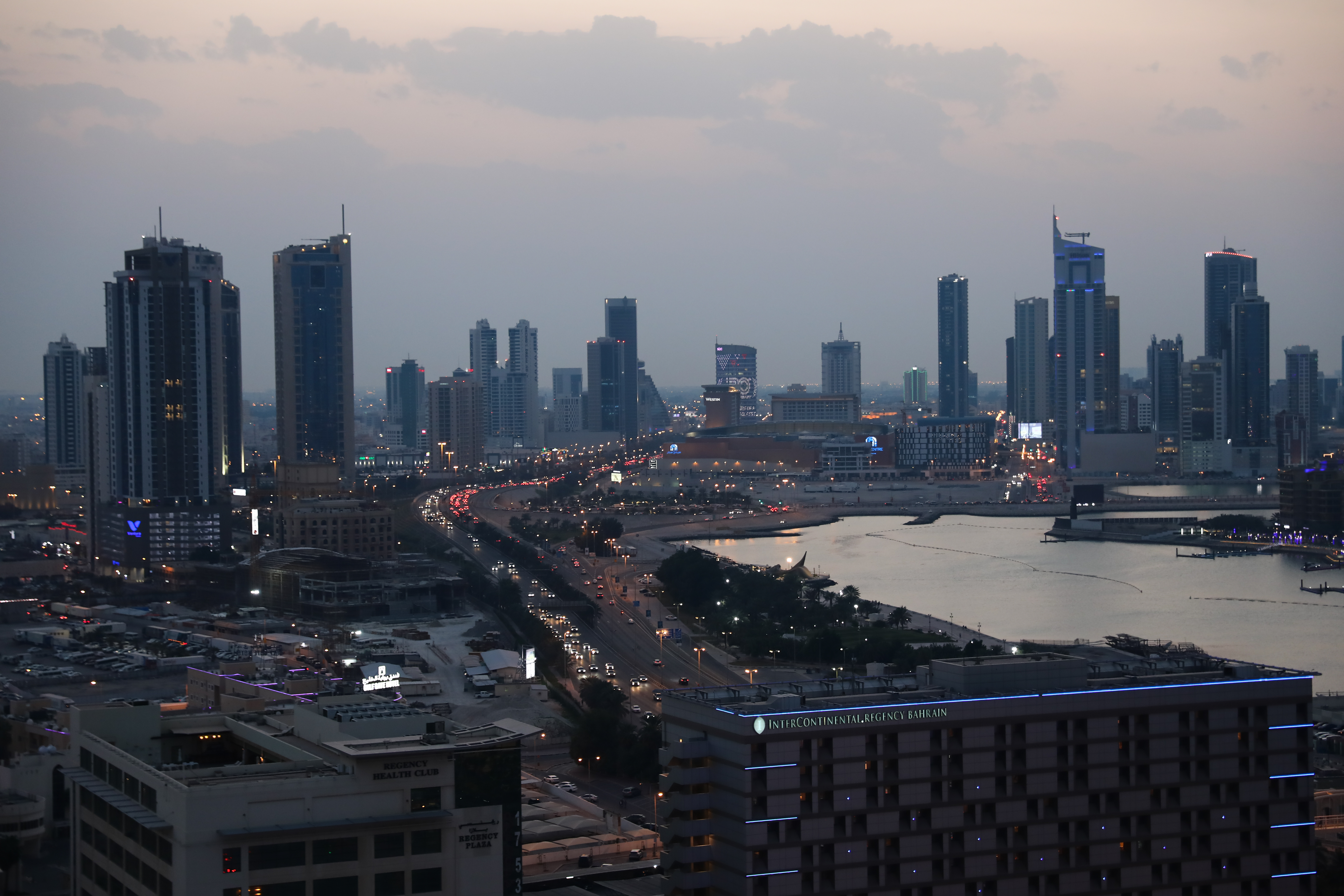
Bahrain’s Climate and the Water-Food-Energy Nexus
Bahrain has a warm and arid desert climate. The country experiences an average of 82 mm of rain per year and an average annual temperature of 28°C (82°F) with average summer temperatures ranging as high as 41°C (106°F).1 But the real amplifier of heat is the relative humidity: Average monthly relative humidity runs from a low of 67% in May to a high of 81% in December, which is quite an elevated range for humidity.2
In terms of water resources, Bahrain has virtually no freshwater supplies. With no natural surface water systems, the kingdom's only source of freshwater comes from underground aquifers, and that is quite limited due to historical overreliance and depletion. Available groundwater sources include the Damam Aquifer, which is shared and recharged by Saudi Arabia, and the Umm er Radhuma Aquifer, which is composed of brackish water.3 Given the absence of surface water supplies and an evapotranspiration rate that far exceeds the minimal rainfall that Bahrain receives, the country is effectively in a state of water deficit.4 To meet its water needs, the kingdom is highly dependent on coastal seawater desalination and, to a lesser extent, wastewater reuse. Desalination is used to satisfy municipal water needs, while wastewater reuse is utilized for agricultural needs (with the potential for recycled water to also be applied as recharge for groundwater aquifers).5 Overall, Bahrain’s water supply portfolio is derived from groundwater (54%), desalination (36%), and treated wastewater (10%).6
As a consequence of Bahrain’s arid climate and limited water supplies, it imports almost all of its food. Approximately 94% of food consumed locally comes from outside the kingdom.7 Improving food security would require reducing dependence on food imports, most of which come from Turkey, Saudi Arabia, and the United Arab Emirates.8
To help sustain its desalination-heavy water supply portfolio, Bahrain generates most of its electricity from natural gas (83%), with a much smaller amount coming from oil (17%).9 Desalination is very energy intensive and accounts for an estimated 5-12% of overall electricity usage across the Gulf Cooperation Council (GCC). When it comes to electricity consumption in Bahrain’s water sector, 97% is from water production.10
Bahrain is the oldest oil producer in the GCC and continues to export most of its oil in the form of refined petroleum products, which account for 60% of its exports. The carbon emission potential from these hydrocarbon energy sources contributes to the warming of the earth’s atmosphere, which in turn fuels the adverse climate change impacts placing the country under environmental and climate duress. In terms of its contribution to global carbon emissions, Bahrain ranks 70th in the world, with a total of 33,260 kilotons of carbon emitted, as of 2019.11
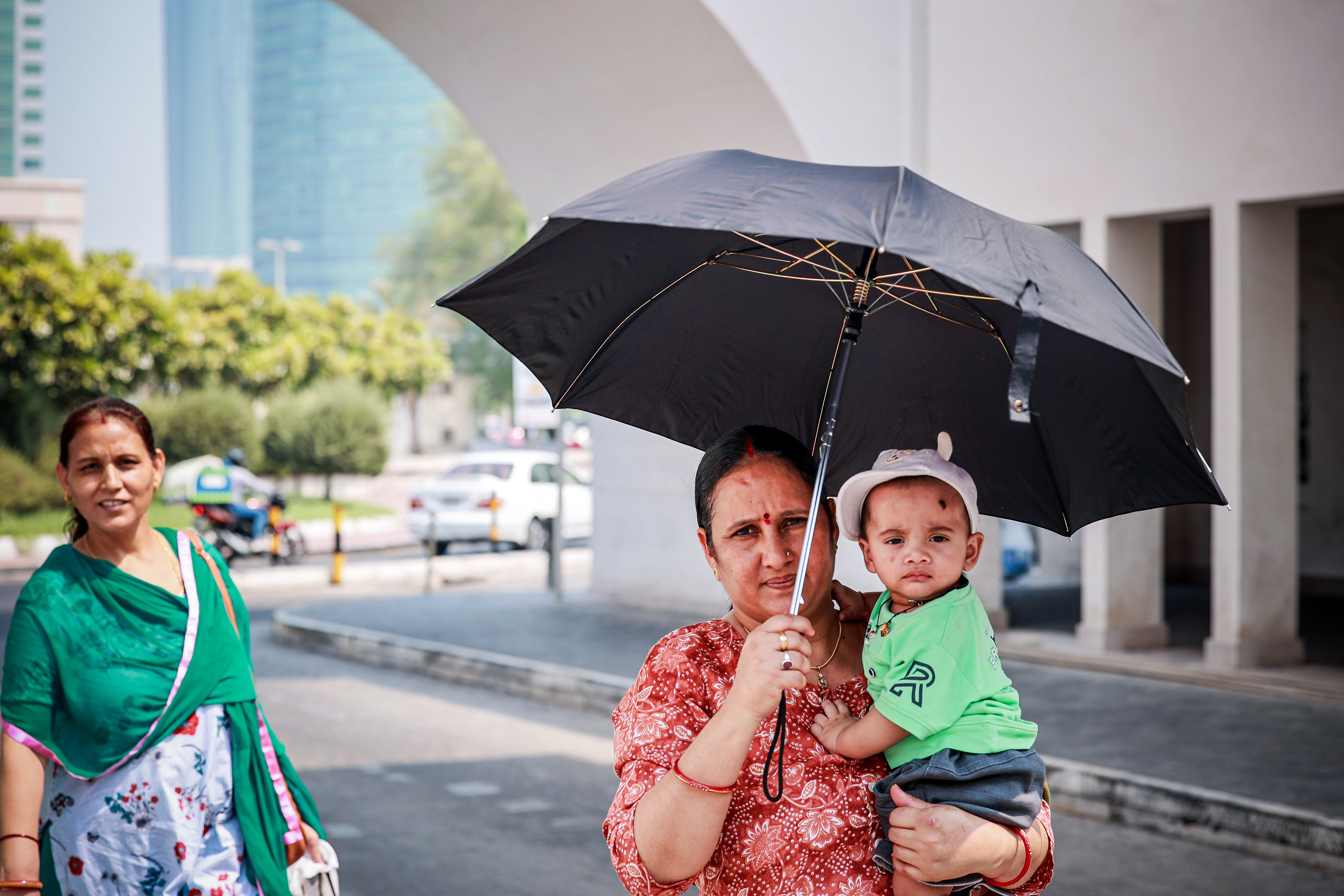
Current and Projected Impacts of Climate Change
Bahrain, like its Gulf neighbors, has been experiencing amplified climate change impacts over the last few years. Extreme heat has plagued the region, with new record-breaking temperature highs in multiple countries around the Gulf (and the Middle East as a whole) occurring in the summer of 2021 and 2022.12 Extreme weather in the Gulf has also manifested with alarming intensity and frequency. A higher incidence of intense precipitation events has caused devastating flooding events across the coastal Arabian Peninsula.13 For an island nation like Bahrain, this could be doubly adverse considering the potential risk of inland inundation. Frequent dust storms are another form of extreme weather affecting the region, hitting it especially hard in early summer 2022. While these dust storms proved particularly severe for Iraq, Gulf countries were not spared either, along with the resulting degradation of air quality.14
Climate projections for the Gulf region suggest that current conditions will intensify in the future, presenting more complicated challenges. The effect of increased warming will be multi-faceted: a lengthening of warmer seasons, a higher incidence of extreme heat events during the summer that could result in record-breaking temperatures, and a significantly higher number of days in the year when temperatures are above the long-term historical average. From a public health perspective, exposure to extreme heat conditions for extended periods brings with it the risk of heat-related illnesses such as heat exhaustion and heatstroke — medical conditions that can lead to death if left untreated. Outdoor workers are particularly vulnerable to heat-related illness given the amount of time they spend outside during the hottest part of the day (in the late afternoon) while performing physically exerting jobs, like construction work. Even for those not exposed to the heat directly, indoor temperatures can become unbearable without adequate cooling, putting more pressure on energy sources to meet elevated commercial and residential cooling requirements.
Urban and densely populated areas will experience additional complexities associated with increased warming. One such complication is the urban heat island effect. This is when solar radiation and heat absorbed during the day in cities (due the abundance of heat absorbing materials such as asphalt and concrete) radiates outwards at night, creating a “bubble” of warming that causes nighttime temperatures not to drop significantly from those during the day and thus offering no reprieve from the extreme heat. The urban heat island effect also impacts infrastructure: Physical assets that are more routinely exposed to higher temperatures experience more wear and tear, as well as reduced operational lifespans, necessitating more frequent maintenance and repair.
Countries with coastal communities, like Bahrain and most other Gulf states, will continue to see higher rates of relative humidity due to increased evaporation from warmer oceans that are absorbing more heat. Humidity acts as a heat multiplier, whereby higher rates of humidity cause humans to experience heat at a level that is higher than the actual temperature.15
Coastal areas are also vulnerable to a more slowly progressing but dangerous climate change outcome: sea level rise. The coupled effect of warming oceans and the melting of polar icecaps is the inundation and underwater submersion of more terrestrial landmasses along coastlines. Additionally, due to sea level rise, there is a risk of saltwater intrusion into Bahrain’s freshwater aquifers — the source of its groundwater supply. Such an outcome would threaten the kingdom’s water security as freshwater aquifers compromised by seawater intrusion would need to be desalinated before consumption. Therefore, for an island nation like Bahrain, which is surrounded by seawater, sea level rise poses an existential threat. In the medium term, it threatens to submerge critical infrastructure like desalination plants and water treatment facilities, and encroach into residential and agricultural areas. In the long term, sea level rise, if left unmitigated, could completely submerge some island nations, including Bahrain.
The warming of the Gulf generates other negative environmental impacts as well. Significantly warm bodies of water accelerate algae growth, degrade ecosystems and corals, and harm fisheries. Warmer water temperatures and dissolved oxygen depletion from algae growth interfere with the reproductive capacity and survivability of certain species of fish, potentially directly impacting Bahrain’s food security by causing the loss of much of its aquaculture.
Warmer oceans also tend to be excellent breeding grounds for severe thunderstorms, and the Arabian Sea (and the Indian Ocean by extension) is no exception. The proximity of the Arabian Sea to the equator guarantees a large amount of solar radiation absorption in comparison to other water bodies. These adjacent bodies of water could generate severe thunderstorms and even tropical cyclones. There is a long history of recorded cyclones making landfall on the southern portion of the Arabian Peninsula, to devastating effect. And while this has mainly been an issue for countries like Oman and the UAE in the southern Gulf, the remnants of cyclones, even after making landfall, can still extend further north. Though the chances of Bahrain being in their direct path are very slim, the remnants of severe cyclones can result in intense rainfall and thunderstorms, leading to damaging floods.
The effect of warming on agricultural food production will place added pressure on the country’s water-food-energy nexus. Amplified warming causes more evapotranspiration, which in turn leads to higher irrigation requirements and agricultural water use. Bahrain’s existing water supplies will be further taxed to meet this increased water demand — whether by depleting groundwater aquifers or through added desalination, further boosting energy usage.
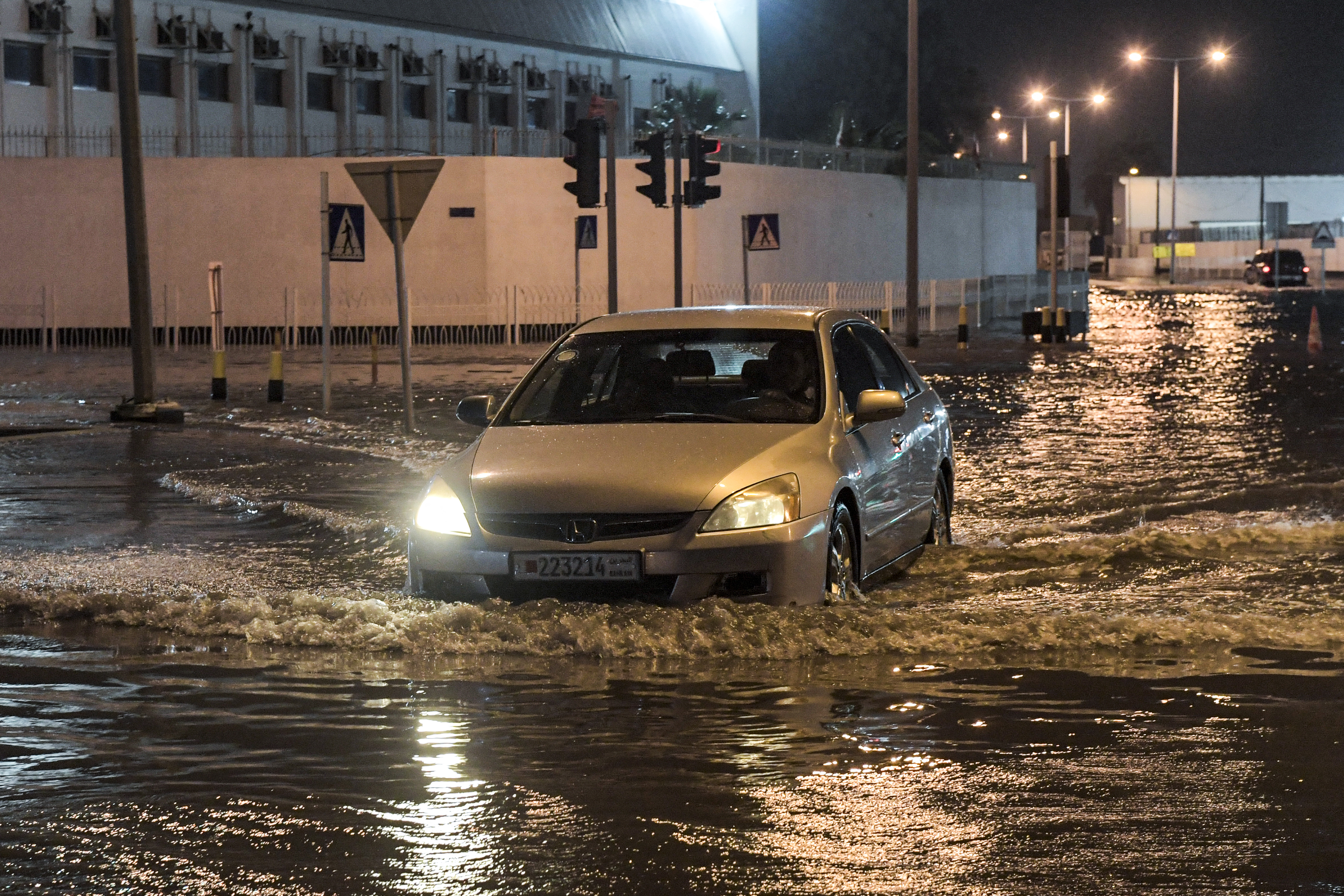
Socioeconomic Implications of Climate Change on Governance and Society
Independent of the impact of climate change, Bahrain is facing other domestic challenges as well, including economic ones. Regionally, its economic growth lags behind that of its GCC neighbors; its GDP is the lowest in the region, at $44.9 billion, or around $30,220 on a per capita basis.16 While the kingdom is attempting to diversify its economy beyond oil and natural gas production (such as in the banking and sports tourism sectors17), and has had some success on that front to date,18 hydrocarbons still generate around 60% of total budget revenues.19
While Bahrain is relatively wealthy for the Middle East as a whole, there is a sizable gap between the rich and poor, especially along ethnic and religious lines. There is no official data on the percentage of Bahrain’s population living below the poverty line — though 2021 estimates by the United Nations Economic and Social Commission for Western Asia place it at 7.5%20 — but rising inflation, high living costs, and growing unemployment over the last few years have made this information essential.21
The reported unemployment rate as of 2023 was 1.3%,22 which is likely an underestimate. The rate among youth aged 15 to 24 was significantly higher though, at 5.8%.23 The longer-term social impact of sustained youth unemployment could be severely detrimental, including a much more inexperienced workforce, weaker job skills, and a higher incidence of mental health issues and depression. Unfortunately, the effects of climate change will only exacerbate these existing challenges.
Climate change impacts also have socioeconomic implications that affect the administration of public services, primarily the provision and reliability of water and electric utilities. Bahrain’s Electricity and Water Authority (EWA)24 provides lumped transmission, metering, and billing of both utility resources to residential customers at varying rates depending on whether or not the recipient is a Bahraini national.
Traditionally, water and electricity rates for nationals are subsidized and structured such that they pay a lower rate for electricity and water up to a particular limit, beyond which the rate increases.25 By contrast, non-nationals pay different and much higher utility rates that are not subsidized by the government.26
However, utility costs have risen across the board for nationals and non-nationals alike.27 As climate change drives an increase in temperatures throughout the year, and especially in the summer, this ultimately translates into higher electricity consumption and costs for residents as their cooling requirements grow. Similarly, with ongoing drought compounding the region’s water scarcity and Bahrain’s reliance on energy-intensive desalination as a source of water supply, the cost of residential water will also increase.
In turn, these potentially rising utility costs will have an adverse effect on Bahrain’s agriculture sector. Local food production, which is driven by private-sector farming operations, will likely suffer a reduction in productivity due to the rising costs of water (to irrigate the land) and power (to pump and transmit the water), especially for smaller-scale community farmers who already operate with small budgets and thin profit margins.
There are also broader societal impacts stemming from the rising costs of utility and public services, as locals are forced to adjust their spending to compensate. Higher costs and limitations on available land are causing a shift in new housing construction, whereby smaller homes are being built as they require less water and electricity.28 And while this shift may be largely driven by financial pressures, it could also help with climate adaptation as utility costs are expected to continue to rise going forward. The trend toward smaller homes may have an unintended cultural outcome, however, limiting Bahrainis’ ability to host larger family gatherings. Arab culture is steeped in hospitality and familial bonds; large families tend to be the norm and friends and families often congregate at homes for social visits, traditional events, and religious holidays.
The growing economic pressure on Bahrainis is pushing large segments of the population into debt as more citizens rely on recurring loans to offset higher living expenses.29 Interestingly, rising costs have not consistently prompted residents to reduce non-essential spending, such as for entertainment, travel, and retail. Instead, many residents take advantage of personal loans as a means to maintain their previous levels of expenditure,30 fueling a cycle of debt and unsustainable spending and creating a false sense of economic prosperity.

Assessing the Climate Risk of Bahrain’s Most Climate-Vulnerable Communities
There are several population segments in Bahrain that are distinctly vulnerable to the impacts of climate change, including communities that experience either a direct or secondary level of climate risk.
When it comes to direct vulnerability, particularly to extreme heat, migrant workers are likely the most vulnerable group, as many of them work outdoors in occupations like construction, maintenance, and public works. According to estimates from the government, 63% of Bahrain’s workforce is composed of workers from overseas.31 The prolonged over-exertion of workers under heat stress is a strong contributing factor in the deaths of an estimated 10,000 migrant workers from South Asia in the GCC every year.32 Considering Bahrain’s high temperatures and humidity, this public health predicament is very much a relevant issue for the kingdom.
Many of Bahrain’s older urban areas, often referred to as villages, have fallen into disrepair with housing that is akin to modern-day shanty towns with poor structural integrity and construction.33 Extreme weather events, particularly intense thunderstorms and associated flooding, can easily do severe damage to such homes, reducing their viability or even leaving occupants homeless. Floods can also result in expansive mold growth, creating a respiratory health hazard for residents who have experienced water damage to their homes.
Another group directly vulnerable to climate change is the elderly. This segment of the population experiences climate risk in all cases of extreme weather: extreme heat, intense precipitation events, and frequent dust storms. There are about 51,000 people above the age of 65 in Bahrain, or around 3.5% of the total population.34 The elderly are more susceptible to heat-related illness and death when temperatures rise to dangerous extremes, as evidenced by the number of older age-related fatalities that occurred during the near-global heatwave of summer 2022 (e.g., over 2,800 people aged 65 and older died in the United Kingdom35).
When it comes to intense thunderstorms and frequent dust storms, the elderly are more prone to experience respiratory issues and health distress. Frequent dust storms drastically reduce air quality, creating conditions where people may inhale more air pollutants and particulate matter. And while such conditions are problematic for all age groups, the elderly do suffer disproportionately. In the most recent series of dust storm events across the Arabian Peninsula in early summer 2022, a significant number of those requiring hospitalization and urgent care were elderly.36
Communities in Bahrain experience secondary climate risks through impacts to their economic well-being. As such, populations that are financially challenged will experience more hardships due to the rising cost of utilities linked to drought and warmer temperatures. Affordability will constrain use of essential public services, such as domestic cooling and water. Considering the economic challenges facing locals, a significant portion of Bahrain’s population will be quite vulnerable to climate change because of their limited financial means and employment opportunities.
By extension, Bahrain’s farmers will suffer similar secondary climate risks associated with financial hardships due to climate change. The rising costs of water and energy directly constrain farmers’ potential yield,37 translating into increased water pumping, transmission, and conveyance costs, in turn reducing farmers’ output and revenue margin (at best) or putting them out of business altogether (at worst). And for a nation that has a limited agricultural sector and is heavily reliant on food imports, this could have a serious impact. Local food production can provide a cheaper alternative to imports, but only if it has sufficient resources and is economically viable.
Several segments of Bahrain’s society face more than one of these vulnerabilities. Many of those who reside in traditional and historic villages and areas are elderly, poor, farmers, or migrant workers. As these climate-vulnerable communities are not exclusively distinct from each other, those who can be categorized under several such groups suffer an even higher likelihood of climate risk. For example, the elderly who live in the historic and traditional neighborhoods may experience heightened respiratory vulnerability due to extreme weather associated with dust storms and flooding from intense thunderstorms. Similarly, economically challenged citizens who are also farmers could go out of business as the effects of warming and drought persist and amplify.
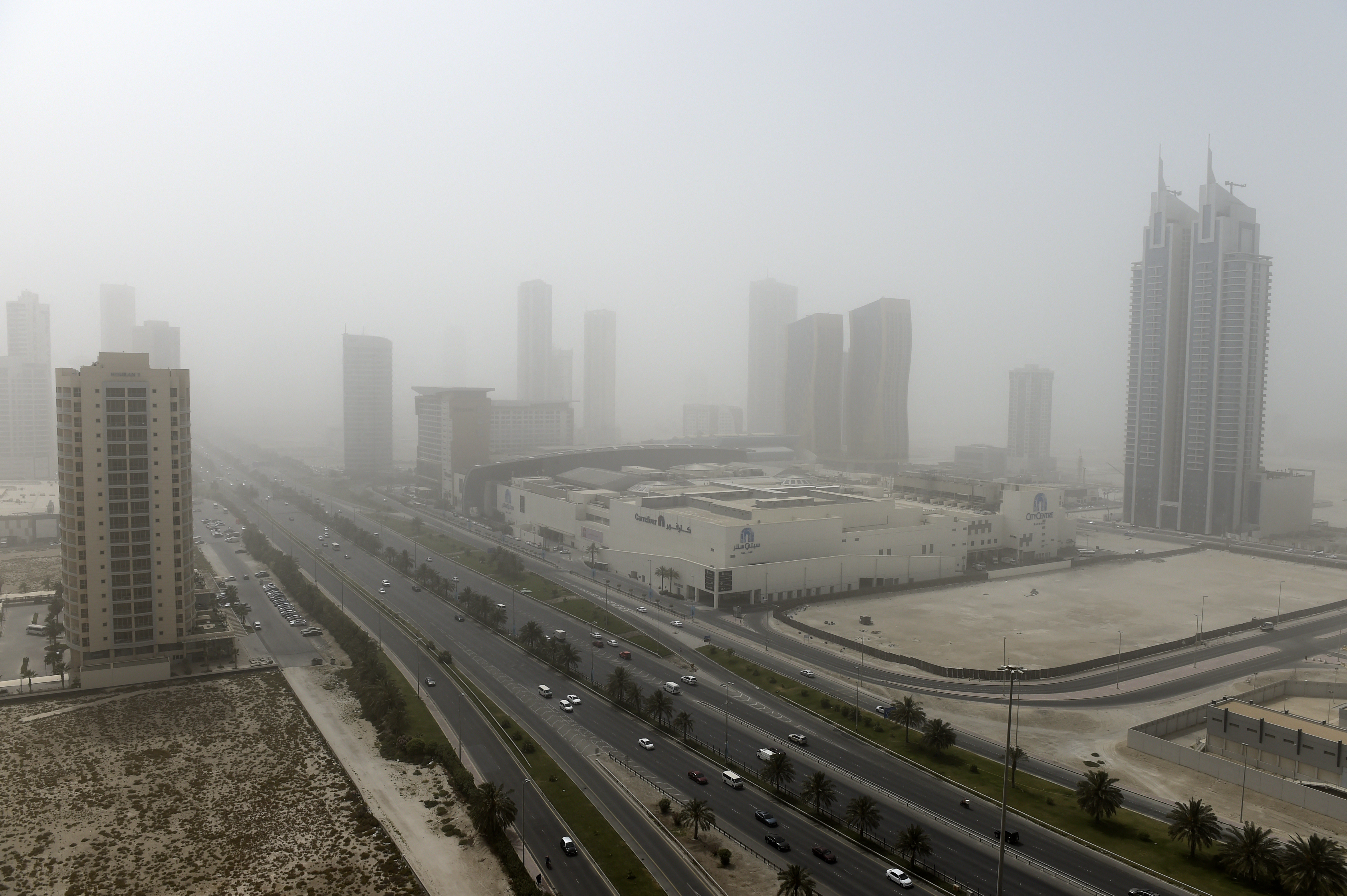
Current and Ongoing Multi-Sectoral Climate-Resilience Initiatives
There are a number of government initiatives and policies intended to address the growing impact of climate change and map out ways to make Bahrain more climate-resilient. From a national administrative perspective, the Supreme Council for Environment has been mandated to manage climate change issues, specifically under the Environmental Policies and Planning Directorate’s Department for Sustainable Development and Climate Change. The Joint National Committee, chaired by the Supreme Council for Environment with representation from other government bodies like the National Oil and Gas Authority, the Ministry of Electricity and Water, the Ministry of Foreign Affairs, and the Economic Development Board, is responsible for taking formal decisions and actions on climate change. Under its purview, the Committee may convene on topics of climate mitigation and adaptation, Bahrain’s international climate obligations (such as to the Paris Agreement and net-zero carbon goals), and the integration of climate commitments with the kingdom’s internal economic, social, and sustainable development.38
Bahrain has been a party to the Paris Agreement since ratifying it in 2016 and, under its commitment to the United Nations Framework Convention on Climate Change, has identified its Nationally Determined Contribution goals,39 which aim to reduce its carbon emissions and help it adapt to climate change. The kingdom has established a target goal of achieving net-zero carbon neutrality by 2060, with an interim goal of reducing carbon emissions by 30% by 2035.40 The island nation has recognized its particular vulnerability to rising seas, as evidenced by the integration of sea level rise considerations into its national development policy. This ultimately resulted in an increase of permitted height for infrastructure associated with land reclamation/coastal expansion projects, and the exploration of mangrove plant forestation as both a carbon sink source and a form of coastal protection.
Several utility-based programs have been pursued to target energy and water conservation at the residential and domestic consumer levels.41 In an effort to reduce electricity usage, the government has encouraged residents through public educational campaigns to purchase more energy-efficient appliances, such as air-conditioning units that use less energy, and switch from traditional light bulbs to longer lasting, more efficient LED lights. Through similar educational campaigns, the government has encouraged homeowners to add more insulation to their homes, to make them more energy efficient by better retaining cool air from air conditioning during warmer periods. The government has also begun to gradually phase out less energy-efficient appliances by limiting imports (primarily of air-conditioner units) to those that meet a particular energy-efficiency rating, thereby compelling residents to shift toward more efficient models when buying new appliances. Additionally, to create greater awareness about electricity usage, EWA has periodically sent updates to residents via text message about their current usage — regardless of whether it was higher or lower than their usual rate.42
Some citizens have taken up their own initiatives to mitigate against the rising cost of electricity, as warming drives up cooling (and electricity usage) needs. A small number of Bahrainis have resorted to voluntarily installing solar panels on their homes.43 However, the process is not without hurdles, and the start-up costs can be prohibitive. In addition to purchasing and installing the panels (estimated at 3,500 Bahraini dinars or $9,283 in 2019), residents must also factor in the expense of connecting the energy generated to the home’s internal electric system, ongoing maintenance of the panels, and other ancillary costs associated with the intermittent nature of solar power generation. As a result, it could take several years for residents to begin to recoup their start-up costs and see a return on investment. Furthermore, as installing residential solar panels is a relatively new enterprise, residents are doing so without direct government support and assistance. This means that if there are connectivity issues with the panels, the home electric system, or the utility grid itself, EWA will not be able to provide technical assistance to resolve them.
On the residential water consumption front, EWA provides services that seek to make homes more water-efficient, including distributing free retrofits, primarily for low-flow fixtures such as faucets and shower heads, to reduce water consumption and waste.44 EWA also has a specific water conservation section tasked with helping citizens evaluate their consumption.45 The team responds to residents’ requests to check for unusually high levels of water consumption by inspecting transmission to the home’s water meter and outside its inner dwelling (e.g., in courtyards and backyards). If a leak is found outside the home, EWA assumes all costs for making the repairs. EWA’s water conservation section also periodically checks and proactively flags homes that register unusually high levels of water use and, after alerting the resident (and with their permission), will conduct an on-site inspection.
Since agricultural activity in Bahrain is primarily driven by the private sector, local farmers bear the brunt of the costs and risks associated with irrigation. With rising costs for both electricity and water affecting the profitability and viability of the agricultural industry, some local farmers have begun to explore alternatives that are more efficient than traditional open field irrigation. Peninsula Farms,46 spearheaded by Sheikh Rashid bin Khalifa Al Khalifa, is a prime example of how greenhouse and hydroponic farming has begun to take root in the kingdom. With a focus on boosting the local agricultural sector and national food security, Peninsula Farms is striving to supply premium local hydroponic produce at competitive prices.
But greenhouse and hydroponic farming comes with its own difficulties: Much like residential solar power generation, it has high initial start-up costs — for installation, growing medium, nutrients, the housing structure, and, of course, water. Greenhouse farming also requires precision, as careful attention must be given to the type of soil used to grow the crops and very measured amounts of water applied to optimize their growth. Water consumption is generally less for greenhouse and hydroponic farming than open field agriculture (up to 90% less), but requires a significantly larger energy footprint to operate and maintain.47 In the long term, however, boosting local food production could help to support the country's domestic sustainability by providing more local produce alternatives and reducing reliance on food imports.
And while farming has mostly been a private-sector endeavor, the government has begun to do more to aid the industry by providing incentives and support mechanisms. The National Initiative for Agricultural Development (NIAD) has placed a renewed emphasis on food security and agricultural resiliency, endorsing programs that provide support for training agricultural workers and the food manufacturing industry, expanding hydroponic farming applications, and transitioning horticulture toward more efficient farming practices.48
Other local climate-resilience efforts worth highlighting are slightly less robust. The government has taken some steps to address the issue of extreme heat affecting outdoor workers and disproportionately migrant workers. Per a 2013 Ministerial Order, outdoor and construction working hours during the summer have been limited to the morning hours before noon.49 This restriction aims to limit exposure to extreme heat during the hottest part of the day, which tends to be in the afternoon. However, this limitation only applies during the two-month period of July and August, which seems insufficient considering that, due to increased warming, dangerous levels of extreme heat are also likely to be experienced in the preceding and subsequent months of June and September. In contrast, other Gulf states have similar summer outdoor working limitations that range between three and four months.50 In terms of citizen-led environmental sustainability efforts, there are sporadic examples of activities like beachfront cleaning and waste recycling, typically conducted as part of after-school programs or individual citizen initiatives, but much more could be done on this front.51
Although not a climate-resilience initiative as such, Bahrain’s extensive artificial coastal expansion efforts could have some limited climate-resilience benefits. Over the years Bahrain has embarked on a number of coastal reclamation projects that have essentially extended the land mass of the island nation.52 While this endeavor was primarily aimed at addressing future population demand and the limited availability of land for residential development, it does provide some level of protection against the sea level rise expected to slowly advance over the next several centuries.53 However, this added protection could very well be negated if the newly reclaimed coastlines are densely populated with infrastructure, residential and commercial buildings, or agricultural lands, as areas near the new shoreline would still be vulnerable to inundation from sea level rise and flooding. At best, populated areas near the interior of the country would be better protected against seawater encroachment, but at the expense of newly populated lands along the reclaimed shoreline.
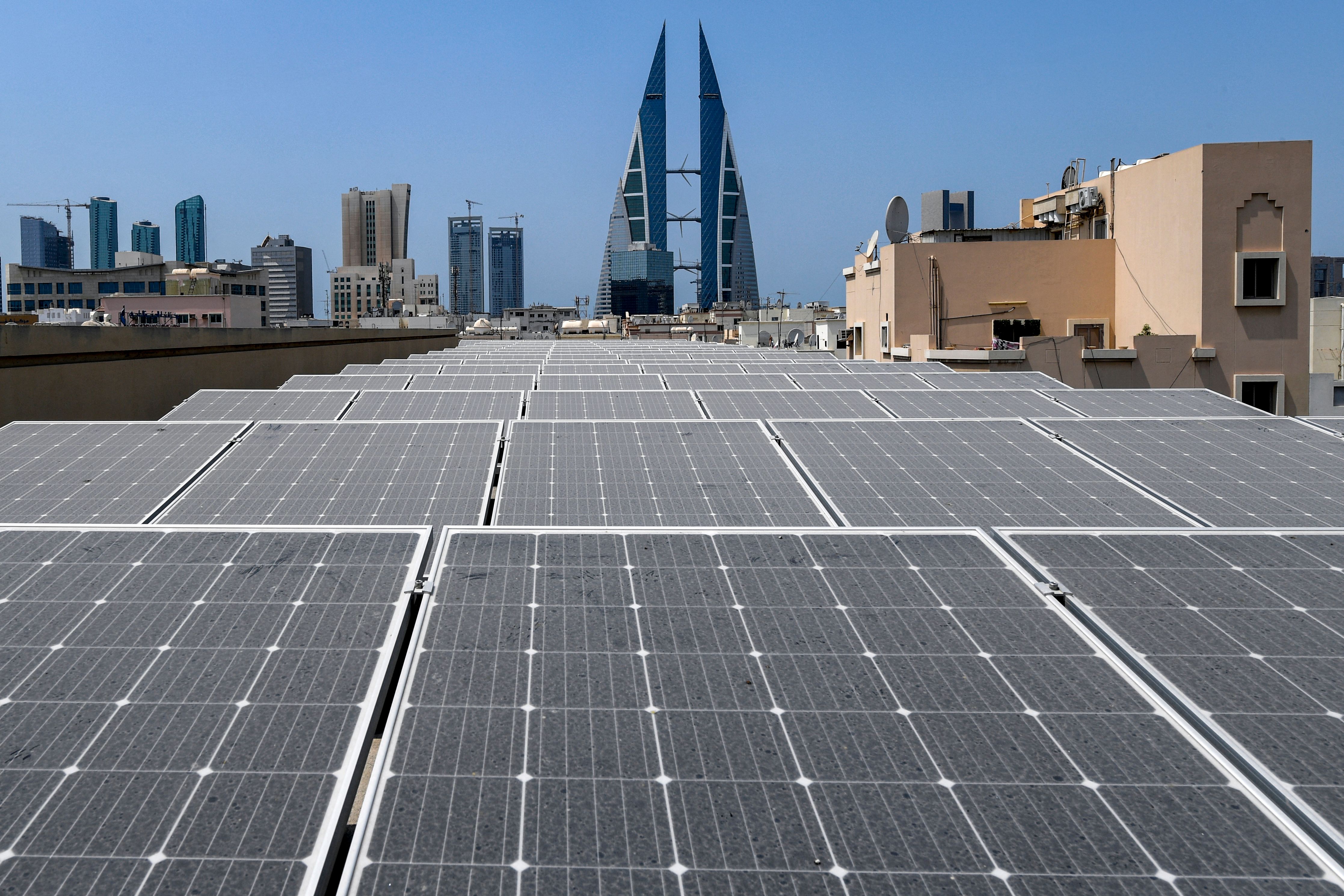
Accessible Climate-Resilience Opportunities at the Governance and Citizen Level
While Bahrain has undertaken efforts that both directly and indirectly address the effects of climate change on aspects of governance and living conditions, there are still some unrealized opportunities that could enable it to become more climate resilient while alleviating socioeconomic challenges. One obvious area to target is the bolstering of burgeoning community and citizen-driven activities and initiatives that provide some measure of secondary climate resilience. This would require direct government support that may not have been previously allocated toward citizen-led initiatives.
One such activity that the government can support is to encourage more residential and even commercial solar panel installations. Recognizing that the start-up costs for individual residents and business owners may be prohibitive, the government, through EWA, can offer incentives to help. These could include reduced electricity usage rates if residents have some particular scale of solar panels installed or rebates on their electric bill that residents can use to offset the cost of installing solar panels.
A similar approach can also be used to encourage more residential water conservation. EWA has already deployed programs that distributed water-saving fixtures, so continuing this type of outreach and highlighting the potential cost savings could appeal to the more financially challenged segments of the population. Water conservation measures can also be beneficial and applicable for the agricultural community. To capitalize on the land- and water-use benefits of greenhouse and hydroponic farming, the government could provide incentives for farmers to transition away from open field agriculture, like a cheaper water rate for hydroponic farmers or rebates to help offset start-up costs. Measures like these would also help to enhance the nation’s water and food security given its water scarcity and heavy reliance on imported food.
Beyond these accessible opportunities are some additional initiatives that would require new action from both government and citizens to bridge some existing climate-resiliency gaps. On the local level, citizens can push their schools and communities to officially incorporate more climate awareness programs that encourage water and energy conservation, recycling and reuse, and waste management. It is important when doing so to not just highlight the environmental value of these programs but also to demonstrate the economic and cost-saving benefits they may bring, especially when considering the intersection between the climate-vulnerable and economically challenged communities in Bahrain.
On this same issue, the government can roll out expanded and mandated environmental activities through their public works and services administration departments by maintaining facilities to collect and process recyclable materials and handle waste management. On the public campaign front, the government can also conduct educational outreach that promotes the phasing out of single-use products such as plasticware and encourage greater reuse of household items. To stimulate participation from the economically challenged, nominal compensation could be offered based on the amount of recyclable materials provided per household for collection and processing.
Finally, with Bahrain’s continuing coastal reclamation efforts, a simple adjustment could yield significant climate protections against sea level rise, coastal encroachment, and inundation: the inclusion of a minimum buffer range within which there should be no construction. This would, in effect, create a coastal “floodplain” that serves as an emergency buffer against the eventual and slowly progressing inland encroachment of sea level rise or from swelling of shoreline waters due to extreme precipitation resulting from severe thunderstorms or remnants of tropical cyclones hitting the Gulf and the Arabian Peninsula.
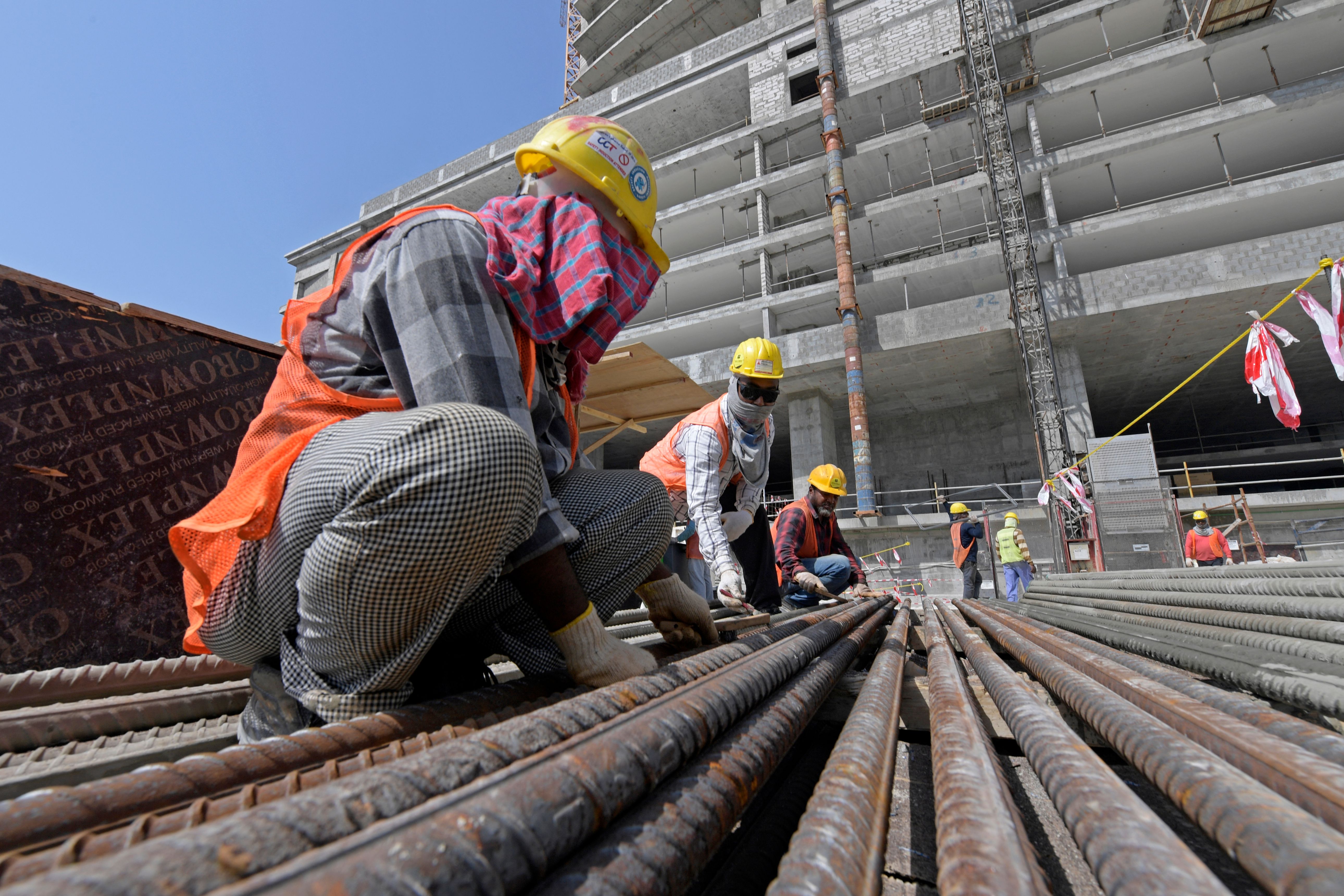
Climate Change Response as a Pathway to Reconciling Bahrain’s Societal Burdens
At some level there may seem to be a perceived disconnect among the general population about the threat that climate change poses to Bahrain and the urgency of responding to it, with current socioeconomic and governance issues taking precedence. However, the reality is that climate and governance issues are not entirely decoupled. And in fact there may be mutually beneficial solutions that apply to both, such that efforts to address Bahrain’s climate vulnerability can also help to tackle other pressing social issues as well.
One urgent area of concern where citizen needs and climate change requirements intersect is Bahrain’s climate-vulnerable communities. It is no coincidence that most of the identified climate-vulnerable groups are also experiencing socioeconomic hardship and risk being further disenfranchised. Addressing climate resilience among groups like the poor or economically challenged, the elderly, and those who live in historic and traditional neighborhoods has the added benefit of also alleviating some of their societal struggles.
Protecting the elderly and residents of traditional and historic areas by minimizing the impacts of extreme weather (e.g., heat, flooding, and dust storms) through construction and maintenance projects that improve the structural integrity and climate resilience of their homes can go a long way to expand goodwill toward the government among these often marginalized communities. Finding ways to reduce the cost of living, especially for the poor and economically challenged, would have a similar effect as well. Existing initiatives have begun to move in that direction while also meeting some climate adaptation objectives, e.g. EWA’s electric rate subsidies, water conservation programs, and the push for more water-efficient fixtures and energy-saving appliances. Continuing efforts in this vein should be pursued as there is already a framework in place. New initiatives could include supporting local residents with their own proactive measures, such as helping to mitigate some of the costs of residential solar panel installation and fixing water leaks inside homes.
On a broader scale, easing climate-related burdens for farmers and migrant workers will also have an economic net benefit. Supporting local farmers, whether they continue open field agriculture or transition to greenhouse and hydroponic farming, can only yield positive gains. Increasing local food production would help to offset the high cost of importing food. Additionally, if local farming enterprises become more successful, it would open the door for new avenues of employment, which can assist in reducing the high rates of unemployment or underemployment among youth.
Furthermore, there are some long-term potential economic gains from dealing with the complications associated with extreme heat for outdoor workers, including migrant and construction workers. Besides addressing a potential public health issue, providing guidelines on external work that avoids heat illness and providing tools and technology that give these workers some relief from extreme heat can sustain these types of occupations as viable areas of employment. This workforce can also continue to work on construction and coastal reclamation projects that could mitigate against the risk of future sea level rise — provided a coastal buffer devoid of critical infrastructure and settlement is established.
Ultimately, engaging citizens in these opportunities to mitigate against climate change vulnerability can also create a sense of challenge ownership and empowerment, which is desirable when addressing climate impacts and working to improve socioeconomic conditions.
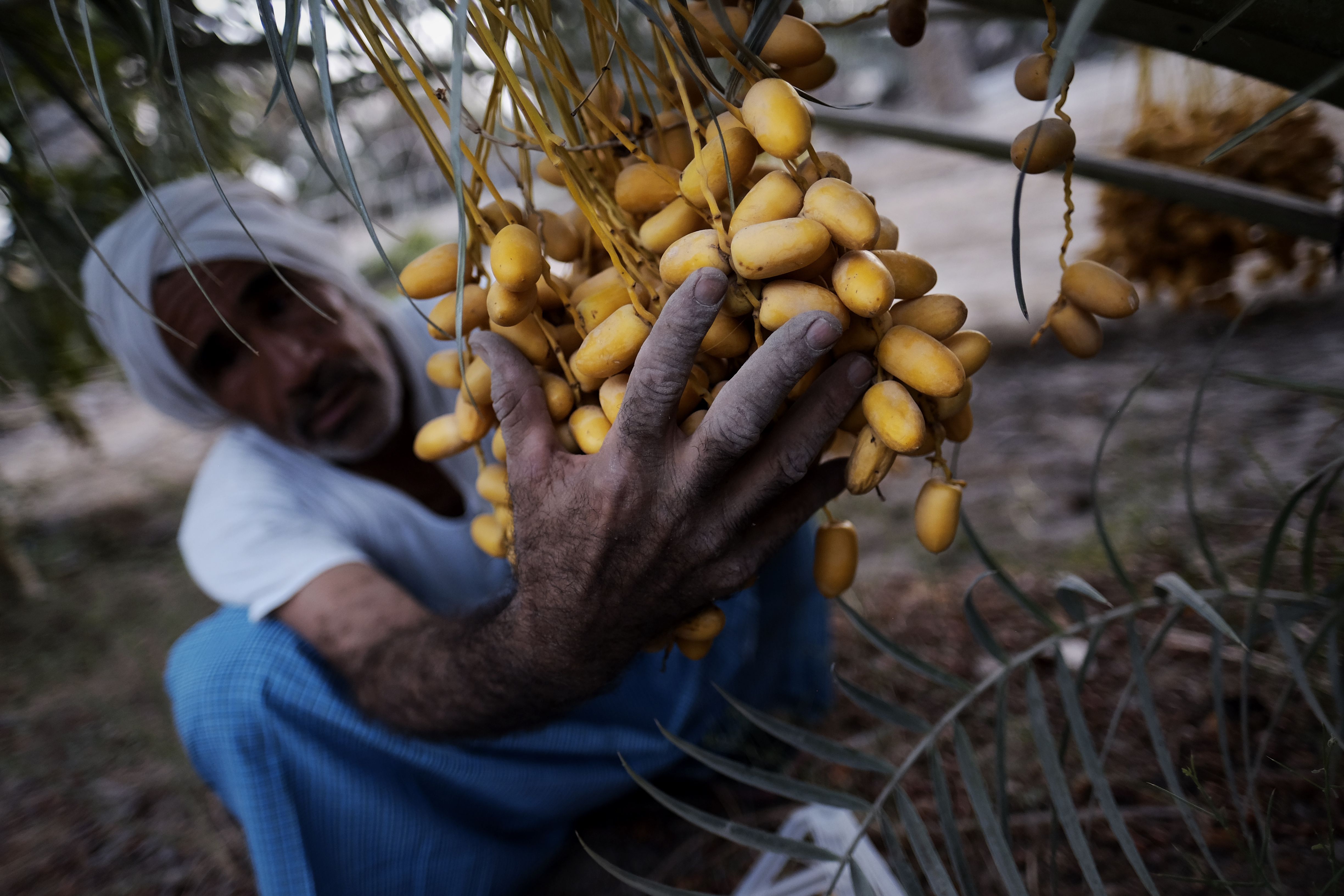
Policy Recommendations for Community and Governance-Based Climate Resilience in Bahrain
Considering the current and projected impacts of climate change and the climate risk implications posed to Bahrain’s governance, socioeconomics, and most vulnerable communities, the following policy recommendations are intended to enhance Bahrain’s climate response by maintaining existing climate-resilience initiatives while exploring new opportunities at both the government and citizen levels:
Government Initiatives and Policies
-
Enhance the role of the Supreme Council for Environment to lead climate change initiatives with support from other government bodies like the National Oil and Gas Authority and the Ministry of Electricity and Water.
-
Strengthen the Joint National Committee's mandate to address climate mitigation and adaptation strategies, aligning with international commitments such as the Paris Agreement.
Utility-Based Programs
-
Expand utility programs to promote energy and water conservation at the residential level through incentives for adopting energy-efficient appliances and water-saving fixtures.
-
Implement measures to phase out less energy-efficient appliances and provide periodic updates on electricity usage to keep residents informed.
Citizen-Led Initiatives
-
Provide financial incentives and technical support for residential solar panel installations to reduce dependency on the electric grid.
-
Continue water conservation programs and provide support for farmers transitioning to more water-efficient greenhouse and hydroponic farming methods.
Community Engagement and Education
-
Encourage citizen-led climate-awareness programs in schools and communities, highlighting the economic benefits of conservation.
-
Mandate environmental activities through public works departments, focusing on waste management and recycling, with compensation for participation from economically challenged segments.
Coastal Reclamation and Protection
-
Implement minimum buffer zones in coastal reclamation projects to mitigate against sea level rise and extreme weather events, safeguarding against future inundation.
Societal Resilience
-
Address climate vulnerabilities in marginalized communities, including the elderly and economically challenged, through infrastructure improvements and cost-saving initiatives.
-
Support local farmers and migrant workers to alleviate economic burdens, focusing on sustainable agriculture practices and occupational health measures.
Empowering Citizens
-
Engage citizens in climate-resilience efforts to foster a sense of ownership and empowerment, encouraging active participation in addressing climate impacts and improving socioeconomic conditions.
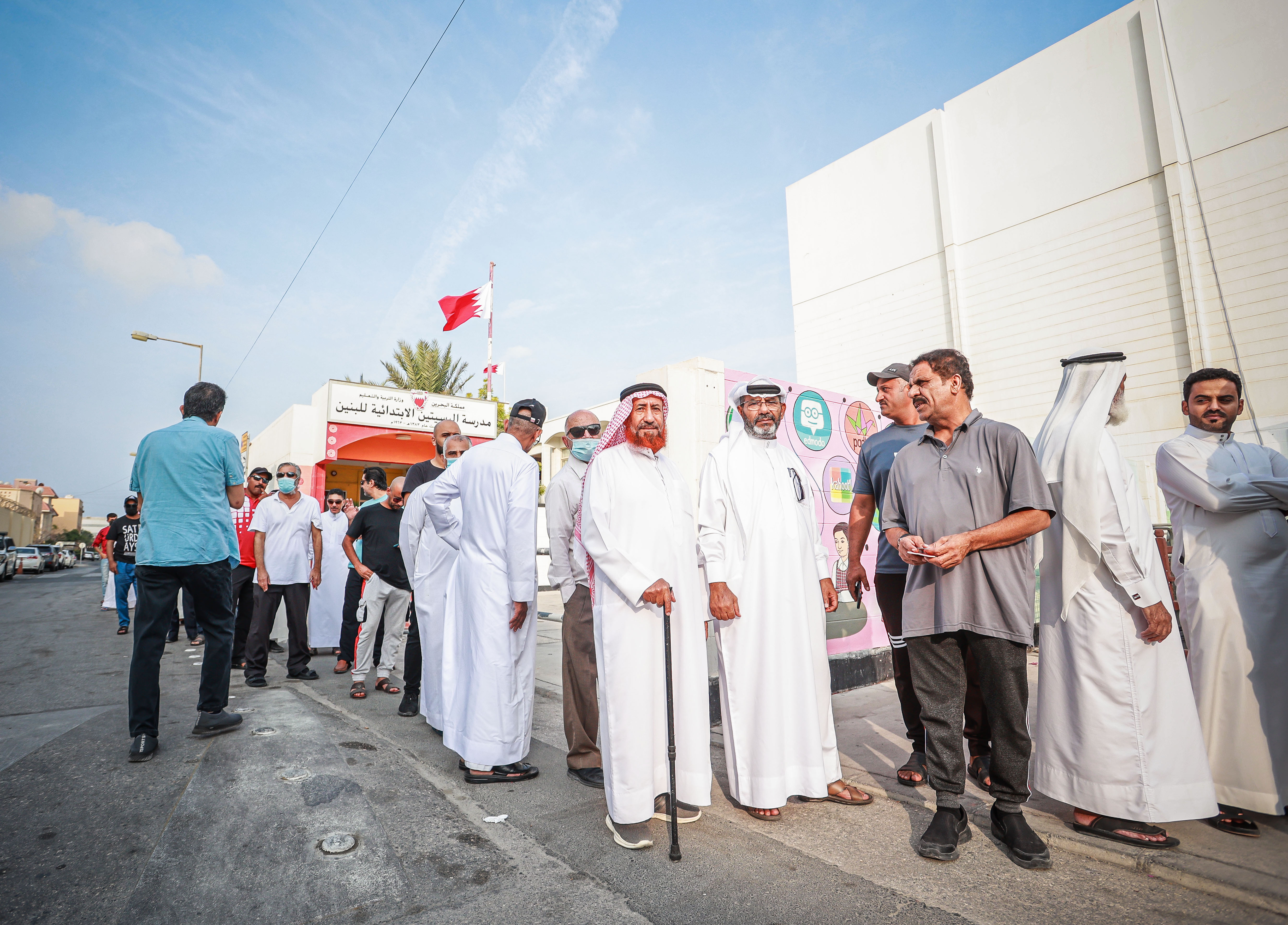
Conclusion
Current and future climate change impacts, such as drought, extreme heat, and extreme weather, are stressing Bahrain’s water-food-energy-nexus, the backbone of natural resources that support the sustainability of the nation and its ability to thrive socioeconomically. This, in turn, causes some segments of Bahraini society to disproportionately suffer secondary impacts of climate change, especially the poor, elderly, and disenfranchised. However, in the face of an extremely climate-vulnerable future, Bahrain has begun to put into place measures to address some of these climate implications on society, particularly in the context of utility services. Citizens have also started to implement their own voluntary projects to mitigate against the impacts of climate change on their daily lives from an economic perspective, such as by installing solar panels at home and pursuing community-based farming.
A future for the Kingdom of Bahrain that is more climate-resilient involves a framework of actions that is not necessarily wholly directed by the government and its various administrative arms. The reality is the government also requires engagement from Bahrain’s citizens and residents, as clearly demonstrated by some of the climate adaptive programs that have been primarily initiated by enterprising and forward-looking Bahrainis. There are multiple opportunities to enhance the kingdom’s climate resilience while simultaneously tackling some of its ongoing socioeconomic challenges. And with climate change accelerating its impacts on Bahrain, there is no better time to embark on those opportunities than now.
About the Author
Mohammed Mahmoud is the Director of the Climate and Water Program and a senior fellow at the Middle East Institute. His areas of expertise include climate change adaptation, water policy analysis, and scenario planning. Mohammed has held leadership positions in several organizations. Most recently as Chair of the Water Utility Climate Alliance; a coalition of 12 of the nation’s largest water utilities that collectively provide water to over 50 million people in the United States, with the purpose of providing leadership and collaboration on climate change issues that affect water agencies. Prior to that Mohammed was President of the North American Weather Modification Council; an organization dedicated to advancing research and development activities that increase the scientific knowledge and proper use of weather modification applications.
Endnotes
1 “Climate Change Knowledge Portal: Bahrain,” World Bank, Accessed May 22, 2024, https://climateknowledgeportal.worldbank.org/country/bahrain/climate-data-historical.
2 “Average humidity in Bahrain,” Weather and Climate, Accessed May 22, 2024, https://weather-and-climate.com/average-monthly-Humidity-perc,Bahrain,Bahrain#google_vignette.
3 “Water Resources in Bahrain,” Fanack Water, January 15, 2020, https://water.fanack.com/bahrain/water-resources-bahrain/.
4 “Bahrain Water Report,” Fanack Water, January 15, 2020, https://water.fanack.com/bahrain/.
5 “Water Use in Bahrain,” Fanack Water, January 15, 2020, https://water.fanack.com/bahrain/water-uses-bahrain/.
6 “Regional Focus: Middle East,” Netherlands Water Partnership, Accessed May 22, 2024, https://www.netherlandswaterpartnership.com/regions/middle-east.
7 Guan Yu Lim, “Consumption challenge: Bahrain steps up food security efforts as it drops in global ranking,” Food Navigator Asia, February 12, 2020, https://www.foodnavigator-asia.com/Article/2020/02/12/Consumption-challenge-Bahrain-steps-up-food-security-efforts-as-it-drops-in-global-ranking.
8 “Bahrain Food Products Imports by country in US$ Thousand 2019,” World Integrated Trade Solution, Accessed May 22, 2024, https://wits.worldbank.org/CountryProfile/en/Country/BHR/Year/2019/TradeFlow/Import/Partner/by-country/Product/16-24_FoodProd.
9 “Energy Sector of Bahrain,” Fanack Water, January 4, 2018, https://fanack.com/bahrain/energy-sector-of-bahrain/.
10 Maryam Marzooq, Maha Alsabbagh, and Waleed Al-Zubari, “Energy Consumption in the Municipal Water Supply Sector in the Kingdom of Bahrain,” Computational Water, Energy, and Environmental Engineering, Vol. 7, No. 3, July 2018, doi: 10.4236/cweee.2018.73006.
11 “CO2 Emissions - Bahrain,” World Bank Data Bank, Accessed May 22, 2024, https://data.worldbank.org/indicator/EN.ATM.CO2E.KT?locations=BH&most_recent_value_desc=true.
12 “Middle Eastern cities record highest temperatures in the world in one day,” The New Arab, June 19, 2022, https://www.newarab.com/news/middle-eastern-cities-record-highest-world-temperatures.
13 “Deadly flash floods in UAE highlight need for resilience investment,” Climate Home News, September 2, 2022, https://www.climatechangenews.com/2022/09/02/deadly-flash-floods-in-uae-highlight-need-for-resilience-investment/.
14 Sophie Tremblay, “The Middle East’s $13 billion sandstorm problem is about to get worse,” CNN, May 25, 2022, https://www.cnn.com/2022/05/25/middleeast/climate-change-sand-storms-mime-intl/index.html.
15 “What is the heat index?,” National Weather Service, Accessed May 22, 2024, https://www.weather.gov/ama/heatindex.
16 “Macro Poverty Outlook: Bahrain,” World Bank, April 2024, https://thedocs.worldbank.org/en/doc/65cf93926fdb3ea23b72f277fc249a72-0500042021/related/mpo-bhr.pdf.
17 “Bahrain ‘planning more sports projects to develop the sector,’” Zawya, May 3, 2024, https://www.zawya.com/en/world/middle-east/bahrain-planning-more-sports-projects-to-develop-the-sector-ttgmhwui.
18 “The lessons of Bahrain, a state that tried to wean itself off oil,” The Economist, May 23, 2019, https://www.economist.com/middle-east-and-africa/2019/05/23/the-lessons-of-bahrain-a-state-that-tried-to-wean-itself-off-oil.
19 “Macro Poverty Outlook: Bahrain,” World Bank, April 2024, https://thedocs.worldbank.org/en/doc/65cf93926fdb3ea23b72f277fc249a72-0500042021/related/mpo-bhr.pdf.
20 “Poverty in the GCC countries: 2010–2021 Technical report,” United Nations Economic and Social Commission for Western Asia, Accessed May 22, 2024, https://www.unescwa.org/sites/default/files/pubs/pdf/poverty-in-the-gcc-countries-2010-2021-english_3.pdf.
21 “New evaluation of poverty line urged amid increasing inflation in Bahrain,” Zawya, August 22, 2019, https://www.zawya.com/en/economy/new-evaluation-of-poverty-line-urged-amid-increasing-inflation-in-bahrain-f797l8gn.
22 “Unemployment, total - Bahrain,” World Bank Data Bank, Accessed May 22, 2024, https://data.worldbank.org/indicator/SL.UEM.TOTL.ZS?locations=BH.
23 “Unemployment, youth total (% of total labor force ages 15-24) – Bahrain,” World Bank Data Bank, Accessed May 22, 2024, https://data.worldbank.org/indicator/SL.UEM.1524.ZS?locations=BH.
24 “About EWA,” Electricity and Water Authority, Accessed May 22, 2024, https://www.ewa.bh/en.
25 “Electricity and Water Tariffs,” Electricity and Water Authority, Accessed May 22, 2024, https://www.ewa.bh/en/Customer/BillsTariffs/electricity-water-tariffs.
26 “Summer Electricity, Water Charges Cause Huge Burden To Expatriates in Bahrain,” The Daily Tribune, May 24, 2021, https://www.newsofbahrain.com/bahrain/72733.html#google_vignette.
27 “Bahrain Authorities Urged To Probe Into ‘Abnormally High’ Utility Bills,” The Daily Tribune, September 17, 2022, https://www.newsofbahrain.com/bahrain/84082.html.
28 “Demands for bigger homes in Bahrain struck down,” Zawya, March 21, 2022, https://www.zawya.com/en/legal/policy/demands-for-bigger-homes-in-bahrain-struck-down-w5g64me3.
29 “Proposal to wipe out loans of Bahrainis,” Zawya, September 23, 2020, https://www.zawya.com/en/economy/proposal-to-wipe-out-loans-of-bahrainis-nhjmeqcc.
30 “Central Bank of Bahrain decides to stop bank loan deferrals,” Zawya, June 29, 2022, https://www.zawya.com/en/economy/gcc/central-bank-of-bahrain-decides-to-stop-bank-loan-deferrals-jbemxvpp.
31 “Bahrain Facts & Figures,” International Organization for Migration, Accessed May 22, 2024, https://www.iom.int/countries/bahrain.
32 Katie McQue, “Up to 10,000 Asian migrant workers die in the Gulf every year, claims report,” The Guardian, March 11, 2022, https://www.theguardian.com/global-development/2022/mar/11/up-to-10000-asian-migrant-workers-die-in-the-gulf-every-year-claims-report.
33 Claire Beaugrand, “Urban margins in Kuwait and Bahrain: Decay, dispossession and politicization,” City, 18(6), 735–745, November 28, 2014, https://doi.org/10.1080/13604813.2014.962887.
34 “Population ages 65 and above – Bahrain,” World Bank Data Bank, Accessed May 22, 2024, https://data.worldbank.org/indicator/SP.POP.65UP.TO.ZS?locations=BH.
35 “England's heatwaves see highest ever excess deaths among elderly,” Reuters, October 7, 2022, https://www.bbc.com/news/world-middle-east-61335124.
36 “Iraq dust storm leaves 5,000 people needing treatment,” BBC, May 5, 2022, https://www.bbc.com/news/world-middle-east-61335124.
37 Islam Alzeny, “Bahrain’s farmers make final stand against urbanisation and global warming,” Middle East Eye, October 6, 2016, https://www.middleeasteye.net/fr/news/bahrain-s-farmers-make-final-stan….
38 “Climate Action in Bahrain,” Kingdom of Bahrain Supreme Council for Environment, Accessed May 22, 2024, https://www.sce.gov.bh/en/ClimateActioninBahrain?cms=iQRpheuphYtJ6pyXUGiNqvAikN8jAcW4.
39 “Nationally Determined Contribution of Kingdom of Bahrain under UNFCCC 2021,” Kingdom of Bahrain Supreme Council for Environment, Accessed May 22, 2024, https://unfccc.int/sites/default/files/NDC/2022-06/NDC%20of%20the%20Kingdom%20of%20Bahrain%20under%20UNFCCC.pdf.
40 “Bahrain High Level Segment Statement from COP26 in Glasgow,” United Nations Framework Convention on Climate Change, Accessed May 22, 2024, https://unfccc.int/sites/default/files/resource/BAHRAIN_cop26cmp16cma3_HLS_EN.pdf.
41 “Optimal Utilization of Energy,” Kingdom of Bahrain Supreme Council for Environment, Accessed May 22, 2024, https://www.sce.gov.bh/en/OptimalUtilizationofEnergy?cms=iQRpheuphYtJ6pyXUGiNqv2pCW6SsuFQ.
42 According to Bahraini residents, informal interview, January 2023.
43 “Bahrain's first solar-powered home owner encourages others to follow suit,” Zawya, April 15, 2018, https://www.zawya.com/en/economy/bahrains-first-solar-powered-home-owner-encourages-others-to-follow-suit-lnhc2alq.
44 According to EWA employee, informal interview, January 2023.
45 “About Conservation,” Electricity and Water Authority, Accessed May 22, 2024, https://www.ewa.bh/en/Conservation/aboutconservation.
46 “About Us,” Peninsula Farms, Accessed May 22, 2024, https://peninsulafarms.com/about-us/.
47 Dimitra I. Pomoni, Maria K. Koukou, Michail Gr. Vrachopoulos, and Labros Vasiliadis, “A Review of Hydroponics and Conventional Agriculture Based on Energy and Water Consumption, Environmental Impact, and Land Use,” Energies 16, no. 4: 1690, February 8, 2023, https://www.mdpi.com/1996-1073/16/4/1690.
48 “About NIAD,” National Initiative for Agricultural Development, Accessed May 22, 2024, https://niadbh.com/who-are-we/.
49 Rabiya Jaffery, “Migrant workers suffer heat stress during Ramadan in Arabian Gulf,” Climate Home News, April 21, 2022, https://www.climatechangenews.com/2022/04/21/migrant-workers-suffer-heat-stress-during-ramadan-in-arabian-gulf/.
50 “Bahrain’s summer midday work ban concludes, yet the scorching heat persists,” Migrant-Rights.org, September 1, 2023, https://www.migrant-rights.org/2023/09/bahrains-summer-midday-work-ban-concludes-yet-the-scorching-heat-persists/.
51 British School of Bahrain Beach Clean-Up Trip,” The Daily Tribune, March 23, 2016, https://www.newsofbahrain.com/campus/17249.html.
52 “Bahrain Has Grown A Lot In Recent Decades And Is Still Growing: NASA,” The Daily Tribune, September 10, 2022, https://www.newsofbahrain.com/bahrain/83878.html#google_vignette.
53 “Sixth Assessment Report on the Physical Science Basis of Climate Change,” Intergovernmental Panel on Climate Change (IPCC), August 9, 2021, https://www.ipcc.ch/report/ar6/wg1/.











